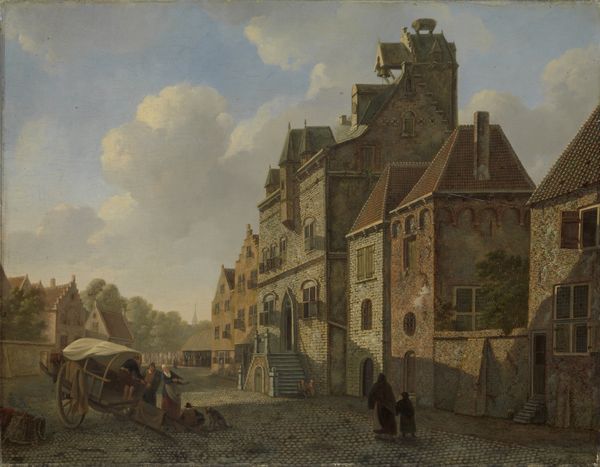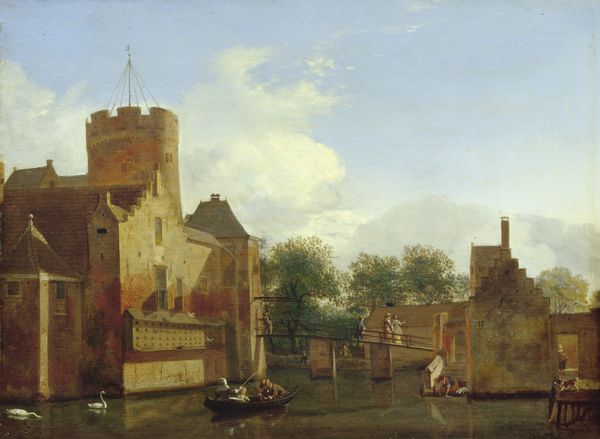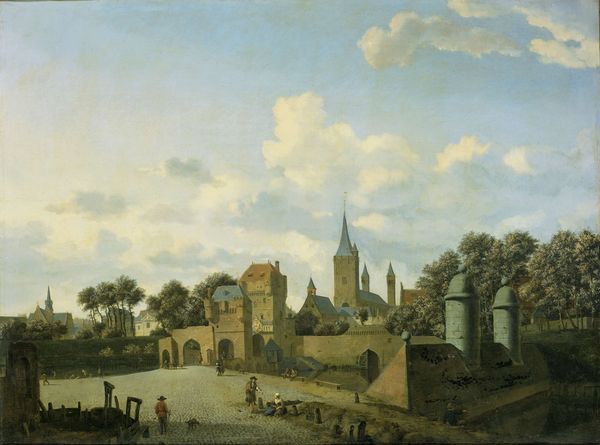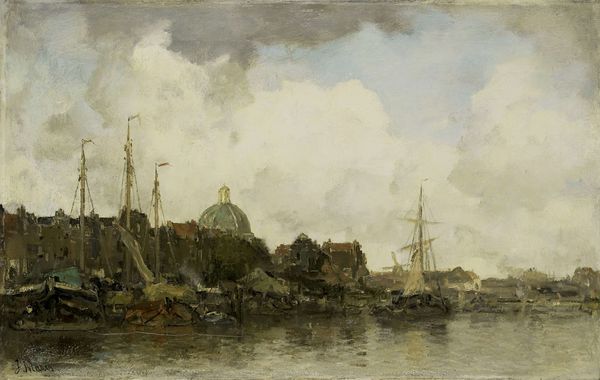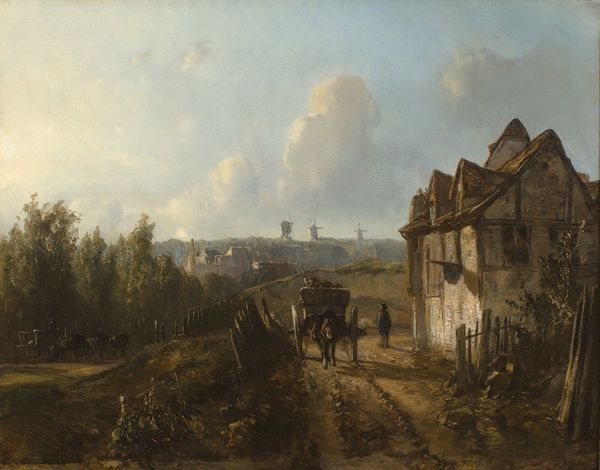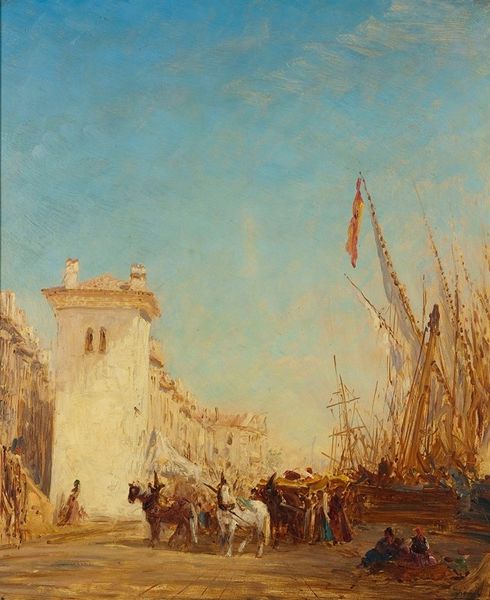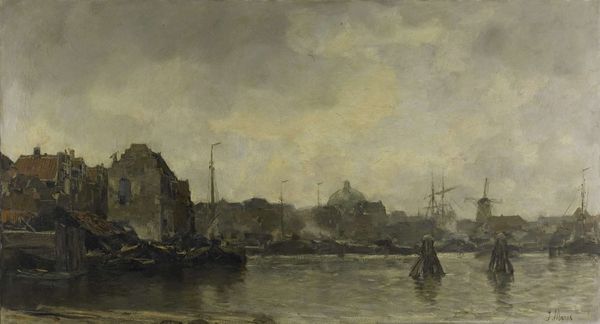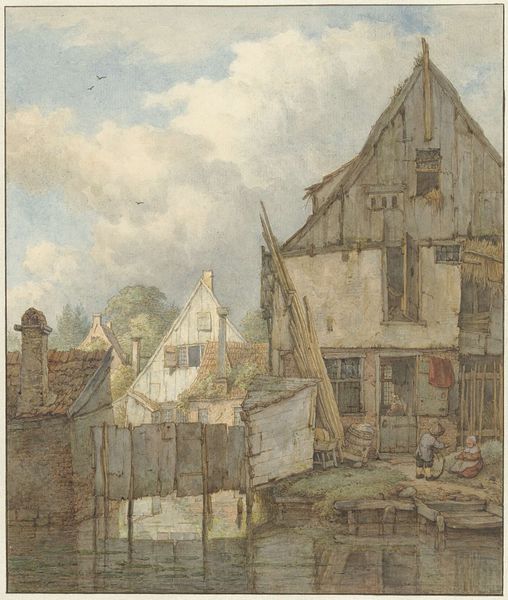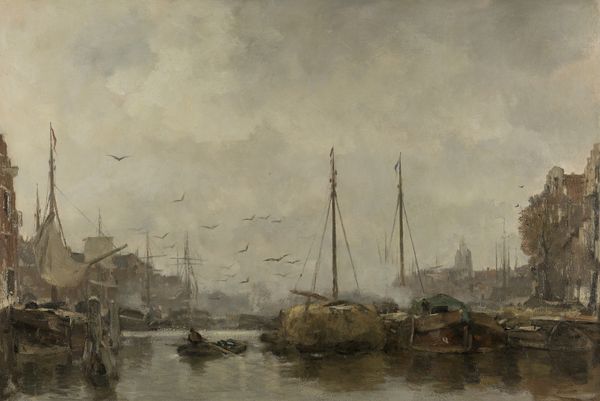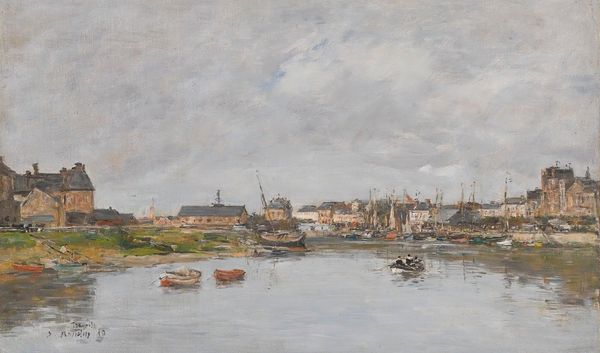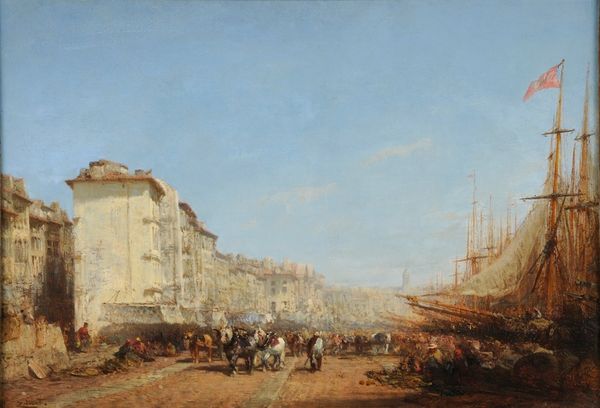
Dimensions: height 48.4 cm, width 60.5 cm, depth 8.3 cm
Copyright: Rijks Museum: Open Domain
Editor: So, we’re looking at "City Wall with Gunpowder Magazine" by Carel Jacobus Behr, dating to 1830. It’s an oil painting, and I’m struck by the way the decaying architecture dominates the landscape. What social context do you see at play here? Curator: It's fascinating how Behr positions this military structure. By the 1830s, many city walls had lost their original defensive function, becoming picturesque relics or even hindrances to urban development. Is Behr romanticizing a bygone era of fortification, or perhaps commenting on the shifting power dynamics within the city itself? Consider the rise of a merchant class less interested in medieval defenses and more invested in open trade and expansion. Editor: That’s a great point! It’s not just a pretty picture; it’s a sign of the times. The way he’s included the everyday bustle with the boats seems to highlight that transition. Do you think the state of disrepair is important? Curator: Absolutely. The crumbling structure is evidence of its obsolescence, reflecting a society moving away from a need for such fortifications. What was once a symbol of protection now becomes an artistic subject, almost a stage for the daily lives unfolding around it. Notice, too, the small figures almost dwarfed by the architecture; this speaks to the new scale of social organization in the period. Editor: I never thought about it that way. So, it’s not just a building, it's about the city's evolving identity. Thanks, I’ve definitely gained a richer perspective on Behr's work. Curator: And it reminds us how paintings provide clues about changing urban societies, it is more than architectural detail.
Comments
No comments
Be the first to comment and join the conversation on the ultimate creative platform.

